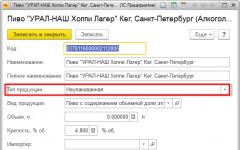Lightning is one of those natural phenomena that has long instilled fear in the human race. The greatest minds, such as Aristotle or Lucretius, sought to understand its essence. They believed that it was a ball consisting of fire and sandwiched in the water vapor of the clouds, and, increasing in size, it breaks through them and falls to the ground with a swift spark.
The concept of lightning and its origin
Most often, lightning is formed in areas that are quite large in size. The upper part can be located at an altitude of 7 kilometers, and the lower part can be only 500 meters above the earth's surface. Taking into account the atmospheric temperature, we can come to the conclusion that at a level of 3-4 km, water freezes and turns into ice, which, when colliding with each other, becomes electrified. Those that have the largest size receive a negative charge, and the smallest ones receive a positive charge. Based on their weight, they are evenly distributed in layers in the cloud. As they approach each other, they form a plasma channel, from which an electric spark called lightning is produced. It got its broken shape due to the fact that on the way to the ground there are often various air particles that form obstacles. And to get around them, you have to change the trajectory.
Physical description of lightning
A lightning discharge releases from 109 to 1010 joules of energy. Such a colossal amount of electricity is largely spent on creating a flash of light, which is otherwise called thunder. But even a small part of lightning is enough to do unthinkable things, for example, its discharge can kill a person or destroy a building. Another interesting fact suggests that this natural phenomenon is capable of melting sand, forming hollow cylinders. This effect is achieved due to the high temperature inside the lightning, it can reach 2000 degrees. The time it takes to hit the ground is also different; it cannot be more than a second. As for power, the pulse amplitude can reach hundreds of kilowatts. Combining all these factors, the result is the strongest natural discharge of current, which carries the death of everything it touches. All existing types of lightning are very dangerous, and encountering them is extremely undesirable for humans.
Thunder formation
All types of lightning cannot be imagined without a clap of thunder, which does not carry the same danger, but in some cases can lead to network failure and other technical problems. It occurs when a warm wave of air, heated by lightning to a temperature hotter than the sun, collides with a cold wave. The resulting sound is nothing more than a wave caused by air vibrations. In most cases, the volume increases towards the end of the roll. This occurs due to the reflection of sound from clouds.
What types of lightning are there?
It turns out that they are all different.
1. Linear lightning is the most common type. The electric boom looks like an upside-down, overgrown tree. Several thinner and shorter “shoots” extend from the main canal. The length of such a discharge can reach 20 kilometers, and the current strength can be 20,000 amperes. The speed of movement is 150 kilometers per second. The temperature of the plasma filling the lightning channel reaches 10,000 degrees.

2. Intracloud lightning - the origin of this type is accompanied by changes in electric and magnetic fields, and radio waves are also emitted. Such a boom is most likely to be found closer to the equator. In temperate latitudes it appears extremely rarely. If there is lightning in a cloud, then a foreign object that violates the integrity of the shell, for example, an electrified aircraft or a metal cable, can induce it to come out. The length can vary from 1 to 150 kilometers.

3. Ground lightning - this type goes through several stages. At the first of them, impact ionization begins, which is created at the beginning by free electrons, they are always present in the air. Under the influence of an electric field, elementary particles acquire high speeds and are directed towards the ground, colliding with the molecules that make up the air. Thus, electronic avalanches, otherwise called streamers, arise. They are channels that, merging with each other, cause bright, thermally insulated lightning. It reaches the ground in the form of a small staircase because there are obstacles in its path, and in order to get around them, it changes direction. The speed of movement is approximately 50,000 kilometers per second.
After the lightning has completed its path, it stops moving for several tens of microseconds, and the light weakens. After this, the next stage begins: repeating the traversed path. The most recent discharge exceeds all previous ones in brightness; the current in it can reach hundreds of thousands of amperes. The temperature inside the channel fluctuates around 25,000 degrees. This type of lightning lasts the longest, so the consequences can be devastating.
Pearl lightning
When answering the question about what types of lightning there are, one cannot lose sight of such a rare natural phenomenon. Most often, the discharge passes after the linear one and completely repeats its trajectory. Only in appearance it looks like balls located at a distance from each other and reminiscent of beads made of precious material. Such lightning is accompanied by the loudest and most booming sounds.
Ball lightning
A natural phenomenon when lightning takes the form of a ball. In this case, the trajectory of its flight becomes unpredictable, which makes it even more dangerous for humans. In most cases, such an electric lump occurs together with other types, but the fact of its appearance even in sunny weather has been recorded.
How it is formed This is the question most often asked by people who have encountered this phenomenon. As everyone knows, some things are excellent conductors of electricity, and it is in them that, accumulating their charge, the ball begins to emerge. It can also appear from the main lightning. Eyewitnesses claim that it simply appears out of nowhere.
The diameter of lightning ranges from a few centimeters to a meter. As for color, there are several options: from white and yellow to bright green, it is extremely rare to find a black electric ball. After a rapid descent, it moves horizontally, about a meter from the surface of the earth. Such lightning can unexpectedly change its trajectory and disappear just as suddenly, releasing enormous energy, which causes melting or even destruction of various objects. She lives from ten seconds to several hours.

Sprite lightning
More recently, in 1989, scientists discovered another type of lightning, which was called sprite. The discovery happened completely by accident, because the phenomenon is observed extremely rarely and lasts only tenths of a second. They are distinguished from others by the altitude at which they appear - approximately 50-130 kilometers, while other subspecies do not overcome the 15-kilometer limit. Sprite lightning is also distinguished by its huge diameter, which reaches 100 km. They appear vertical and flash in groups. Their color varies depending on the composition of the air: closer to the ground, where there is more oxygen, they are green, yellow or white, but under the influence of nitrogen, at an altitude of more than 70 km, they acquire a bright red hue.

Behavior during a thunderstorm
All types of lightning carry an extraordinary danger to human health and even life. To avoid electric shock, the following rules should be followed in open areas:
- In this situation, the highest objects are at risk, so you should avoid open areas. To become lower, it is best to squat down and put your head and chest on your knees; in case of defeat, this position will protect all vital organs. Under no circumstances should you lie flat so as not to increase the area of possible impact.
- Also, you should not hide under tall trees and unprotected structures or metal objects (for example, a picnic shelter) will also be undesirable shelter.
- During a thunderstorm, you need to immediately get out of the water, because it is a good conductor. Once struck, a lightning bolt can easily spread to a person.
- Under no circumstances should you use a mobile phone.
- To provide first aid to the victim, it is best to perform cardiopulmonary resuscitation and immediately call the rescue service.

Rules of conduct in the house
There is also a danger of injury indoors.
- If there is a thunderstorm outside, the first thing you need to do is close all the windows and doors.
- All electrical appliances must be turned off.
- Stay away from corded phones and other cables; they are excellent conductors of electricity. Metal pipes have the same effect, so you should not be near plumbing.
- Knowing how ball lightning is formed and how unpredictable its trajectory is, if it does enter a room, you must immediately leave it and close all windows and doors. If these actions are impossible, it is better to stand still.

Nature is still beyond human control and poses many dangers. All types of lightning are, in essence, the most powerful electrical discharges, which are several times greater in power than all man-made current sources.
Lightning is a powerful electrical discharge. It occurs when clouds or ground are highly electrified. Therefore, lightning discharges can occur either inside a cloud, or between neighboring electrified clouds, or between an electrified cloud and the ground. A lightning discharge is preceded by the occurrence of an electrical potential difference between neighboring clouds or between a cloud and the ground.
Electrization, that is, the formation of attractive forces of an electrical nature, is well known to everyone from everyday experience.
If you comb clean, dry hair with a plastic comb, it begins to be attracted to it, or even spark. After this, the comb can also attract other small objects, for example, small pieces of paper. This phenomenon is called electrification by friction.
What causes clouds to electrify? After all, they do not rub against each other, as happens when an electrostatic charge forms on the hair and on the comb.
A thundercloud is a huge amount of steam, some of which is condensed in the form of tiny droplets or floes of ice. The top of a thundercloud can be at an altitude of 6-7 km, and the bottom can hang above the ground at an altitude of 0.5-1 km. Above 3-4 km, the clouds consist of ice floes of different sizes, since the temperature there is always below zero. These pieces of ice are in constant motion, caused by rising currents of warm air from the heated surface of the earth. Small pieces of ice are more easily carried away by rising air currents than large ones. Therefore, “nimble” small pieces of ice, moving to the top of the cloud, constantly collide with large ones. Each such collision leads to electrification. In this case, large pieces of ice are charged negatively, and small ones - positively. Over time, positively charged small pieces of ice end up at the top of the cloud, and negatively charged large pieces of ice end up at the bottom. In other words, the top of a thundercloud is positively charged and the bottom is negatively charged.

The electric field of a cloud has a huge intensity - about a million V/m. When large, oppositely charged regions come close enough to each other, some electrons and ions, running between them, create a glowing plasma channel through which other charged particles rush after them. This is how a lightning discharge occurs.
During this discharge, enormous energy is released - up to a billion J. The temperature of the channel reaches 10,000 K, which gives rise to the bright light that we observe during a lightning discharge. Clouds are constantly discharged through these channels, and we see external manifestations of these atmospheric phenomena in the form of lightning.
The hot medium expands explosively and causes a shock wave, perceived as thunder.
We ourselves can simulate lightning, even a miniature one. The experiment should be carried out in a dark room, otherwise nothing will be visible. We will need two oblong balloons. Let's inflate them and tie them. Then, making sure that they do not touch, we simultaneously rub them with a woolen cloth. The air filling them is electrified. If the balls are brought closer together, leaving a minimum gap between them, then sparks will begin to jump from one to another through a thin layer of air, creating light flashes. At the same time, we will hear a faint crackling sound - a miniature copy of thunder during a thunderstorm.

Everyone who has seen lightning has noticed that it is not a brightly glowing straight line, but a broken line. Therefore, the process of forming a conductive channel for a lightning discharge is called its “step leader”. Each of these “steps” is a place where electrons, accelerated to near-light speeds, stopped due to collisions with air molecules and changed the direction of movement.
Thus, lightning is a breakdown of a capacitor whose dielectric is air, and the plates are clouds and earth. The capacity of such a capacitor is small - approximately 0.15 μF, but the energy reserve is enormous, since the voltage reaches a billion volts.
One lightning usually consists of several discharges, each of which lasts only a few tens of millionths of a second.
Lightning most often occurs in cumulonimbus clouds. Lightning also occurs during volcanic eruptions, tornadoes and dust storms.
There are several types of lightning in shape and direction of discharge. Discharges can occur:
- between a thundercloud and the ground,
- between two clouds
- inside the cloud,
- leaving the clouds for clear skies.
A thunderstorm is characterized by lightning charges with a force of 100,000 or even more. The sparks heat the air above 30,000 degrees, which is several times more than in the electric arc of a welding machine. And the expansion of air during discharges causes thunder. Types of zippers:
- Solid – discharge between charged areas of the cloud.
- Zigzag - occurs when a discharge occurs between the cloud and the ground.
On average, there are about three lightning strikes every year for every square kilometer of Russian territory. Their email the current can be up to 30,000 amperes, and for the most powerful discharges it can exceed 200,000 amperes. Heat exchange between ball lightning and the environment occurs through the emission of a significant amount of infrared radiation. If we assign a temperature of 500-600 K to ball lightning, then the power of the equilibrium thermal radiation emitted by lightning of average diameter is about 0.5-1 kW and the maximum radiation lies in the wavelength range of 5-10 microns.
Helpful information
 Lightning- a giant electrical spark discharge in the atmosphere, usually occurring during a thunderstorm, manifested by a bright flash of light and accompanying thunder. Lightning has also been recorded on Venus, Jupiter, Saturn and Uranus. The current in a lightning discharge reaches 10-100 thousand amperes, the voltage is 1,000,000 volts, however, only 10% of people die after being struck by lightning.
Lightning- a giant electrical spark discharge in the atmosphere, usually occurring during a thunderstorm, manifested by a bright flash of light and accompanying thunder. Lightning has also been recorded on Venus, Jupiter, Saturn and Uranus. The current in a lightning discharge reaches 10-100 thousand amperes, the voltage is 1,000,000 volts, however, only 10% of people die after being struck by lightning.
Volt- in the SI system, a unit of measurement for electrical potential, potential difference, electrical voltage and electromotive force. The potential difference between two points is equal to 1 volt if, in order to move a charge of 1 coulomb from one point to another, work of 1 joule must be done on it. A volt is also equal to the electrical voltage that causes a direct current of 1 ampere at a power of 1 watt in an electrical circuit. The unit is named after the Italian physicist and physiologist Alessandro Volta, who invented the voltaic column, the first electric battery. 1 V = 1/300 unit. SGSE potential.
In the section on the question How many volts are there in Lightning? given by the author Andrey Zasverlin the best answer is Lightning is a giant electrical spark discharge between clouds and the earth's surface, or between clouds, or between different parts of a cloud. The shape of lightning is usually similar to the branched roots of a tree that has grown in the sky. The length of linear lightning is several kilometers, but can reach 20 km or more. The main lightning channel has several branches 2-3 km long. The diameter of the lightning channel ranges from 10 to 45 cm. The duration of lightning existence is tenths of a second.
The average speed of lightning is 150 km/s. The current strength inside the lightning channel reaches 200,000 A. The plasma temperature in lightning exceeds 10,000°C. The electric field strength inside a thundercloud ranges from 100 to 300 volts/cm, but before a lightning discharge in individual small volumes it can reach up to 1600 volts/cm. The average charge of a thundercloud is 30-50 coulombs. Each lightning discharge carries from 1 to 10 coulombs of electricity. Along with the most common linear lightning, rocket, bead and ball lightning are sometimes found. Rocket lightning is observed very rarely. It lasts 1-1.5 seconds and is a discharge slowly developing between the clouds. Beaded lightning is also a very rare type of lightning. It has a total duration of 0.5 seconds and appears to the eye against the background of clouds in the form of luminous rosaries with a diameter of about 7 cm.
Ball lightning in most cases is a spherical formation with a diameter of 10-20 cm at the earth's surface, and up to 10 m at a cloud height. On Earth, an average of about 100 discharges of linear lightning are observed every second, the average power that is spent on the scale of the entire Earth for the formation of thunderstorms equals 1018 erg/sec. It is interesting to note that the condensation energy released in a medium-sized thundercloud with a base area of about 30 km2 during moderate rainfall is about 1021 erg. That is, the energy released when precipitation falls from a thundercloud significantly exceeds its electrical energy.
Huge flashes of natural energy - lightning - have long attracted people's attention. After the electrical nature of lightning was established, people began to study this phenomenon in more detail. Naturally, the question of the practical use of lightning energy was considered. To do this, first of all, it is necessary to determine the lightning energy reserve.
The maximum potential difference of lightning reaches 50 million volts, and the current reaches 100 thousand amperes. To calculate lightning energy, let's take figures closer to the average for most lightning, namely: voltage of 20 million volts and current of 20 thousand amperes.
During a lightning discharge, the electrical potential decreases to zero. Therefore, in order to correctly determine the average power of a lightning discharge, half the initial voltage must be taken in the calculations.
Then we have the power of the electric discharge:
It turns out that the power of a lightning discharge is 200 million kilowatts. The duration of lightning is about a thousandth of a second, and there are 3600 seconds in every hour. From these data, you can determine the total amount of energy that a lightning discharge provides.
At a price of electrical energy of 3 rubles per 1 kWh, the cost of energy, provided that all lightning energy is fully used, will be 166.67 rubles.
In most of Russia, the frequency of lightning strikes is between 2 and 4 per year per square kilometer, in mountainous areas up to 10 lightning strikes. Of all the types of lightning, we are only interested in the discharge between the ground and electrically charged clouds as a source of energy. To cover a square kilometer you need a large number of lightning rods. It is technically possible to collect a small portion of the electricity from lightning in high-voltage capacitors. You will also need converters with voltage stabilization function. But, as the calculation of the energy capacity of capacitors shows, to store even a small amount of electrical energy, capacitors of enormous capacity and size are needed. The cost of such equipment will be many orders of magnitude more expensive than the cost of the received electrical energy, even with regular, for example, annual replenishment of energy with lightning discharges.
Similar calculations of lightning energy were given in the technical literature. In reality, only a small part of this energy can be obtained and used, for example, to heat water. The main part of lightning energy is spent during a spark discharge on heating the atmosphere, and even theoretically, consumers can use a smaller part of lightning energy.
For example, let's calculate how much energy is consumed for heating, for example, a device such as a lightning rod. The electrical resistance of the air gap, lightning rod and grounding, which lightning overcomes with average discharge characteristics, will be:
R = U/I = 20,000,000 V: 20,000 A = 1000 Ohm
Calculation of the resistance of a lightning rod conductor can be done using a well-known method, if the material, its resistivity, length and thickness of the wire are known. But, for our example, we will consider the conductor resistance to be equal to one 1 Ohm, and the grounding resistance to be 4 Ohms.
If the resistance of a lightning rod is a thousand times less than the total resistance for lightning, then according to Ohm's law for a section of a circuit, the voltage drop across a section of the circuit (lightning rod) is directly proportional to the resistance. This means that the power that is released in the form of heat on the lightning rod will be a thousand times less than the total power or the amount of energy that is released on the lightning rod. In our example, this amount of energy will be equal to 55.556 Wh, which is very insignificant. Knowing the heat capacity of the lightning rod material and its mass, you can determine by how many degrees the temperature of the lightning rod will increase.
To increase the power of the consumer, it is necessary to increase the electrical resistance of the consumer. The best option for the source and consumer of electrical energy is resistance matching when these resistances are equal. It must be borne in mind that with an increase in the total resistance of the current-carrying circuit, the current value will decrease, but the potential difference will remain the same. This will lead to a decrease in the total lightning energy and will reduce the already small probability of a lightning discharge.









